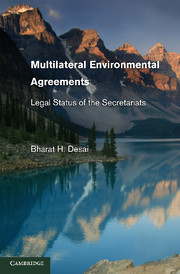2 - Multilateral Environmental Regulation
Published online by Cambridge University Press: 05 September 2013
Summary
Introduction
Multilateral treaty making has emerged as one of the important sources of international law. It does not appear to be sheer coincidence that the International Court of Justice (ICJ), while dealing with a “dispute” submitted to it, is expected to apply “international conventions.” The Statute of ICJ has not laid down any order in which the Court is expected to apply various sources of international law. Still, placing an international convention at the top of the list of sources available to the court is a testament to the value and emergence of treaties as the most important source. It is also no less significant that the United Nations (UN) Charter has sought to give “respect for the obligations arising from treaties,” a pride of place in the preamble itself, and has placed onus on its plenary organ (the General Assembly) to encourage the progressive development of international law and its “codification.” Thus, based on this crucial mandate, the General Assembly established the International Law Commission (as a subsidiary organ of the Assembly).
During the initial decades after the UN came into being, there was a flurry of movement to codify a host of established customary principles of international law. It did unleash an era of codification and laid roots for the giant treaty-making machine for the future. It seems that the UN system itself (for instance, “specialized agencies” like the International Labour Organization [ILO] and the International Maritime Organization [IMO]) regularly churned out conventions that met the needs of their member states to regulate specific areas (like occupational health and safety, maritime safety, and pollution).
- Type
- Chapter
- Information
- Multilateral Environmental AgreementsLegal Status of the Secretariats, pp. 19 - 46Publisher: Cambridge University PressPrint publication year: 2010



